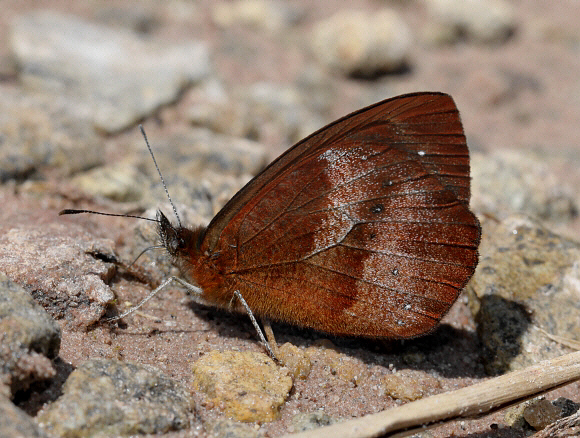
Introduction
There are 1100 known species of Satyrinae in the neotropical region. About 570 of these are placed in the subtribe Pronophilina – a diverse group of high altitude cloudforest butterflies, all of which are confined to the neotropical region. The vast majority are found only in the Andes, but 4 species are known from the Atlantic cloudforests of Brazil, and there are a further 6 species that are endemic to Guatemala, Costa Rica or Mexico. More oddly there is one genus Calisto that is found exclusively on the Caribbean islands of Cuba and Hispaniola.
The genus Lymanopoda is comprised of 57 small species. They are typically brown in colour, and have small ocelli or spots arranged in a characteristic undulating line across both wings. In some species such as apulia and albomaculata these spots are extremely conspicuous, while in others including obsoleta they are often reduced to the point of being almost obsolete.
Lymanopoda obsoleta occurs in Panama, Colombia, Venezuela, Ecuador, Peru, and Bolivia.

Habitats
This is a high altitude cloudforest species, found at elevations between about 1500-2600m.
Lifecycle
The lifecycle appears to be unrecorded. The following generalisations are applicable to the subtribe Pronophilina and probably also apply to Lymanopoda: The eggs are round, white or pale greenish white, and laid singly on the foodplants or on surrounding vegetation. The larvae are typically pale brown, marked along the back and sides with narrow dark stripes, and tapering towards each end. The head is large in proportion to the body and has two short forward-pointing horns. The tip of the abdomen is equipped with a pair of caudal prongs which are used to flick the frass away from the feeding area. The larvae of all known Pronophilina feed on Chusquea – a genus of bamboo which grows in thickets, mainly along the courses of streams.
Adult behaviour
Males of this and most other Lymanopoda species can be seen imbibing mineralised moisture from unmade road surfaces, damp ground beside small streams, and sometimes from dung or carrion. They are most commonly observed when conditions are hazy or slightly overcast. In warm sunny weather they tend to retire into the forest edge vegetation.

